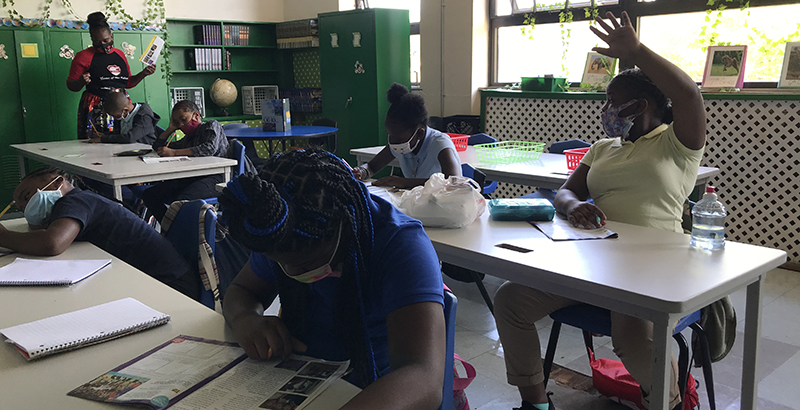By Fedrick C. Ingram
It started with us. Those deemed as some of the greatest minds in history — Plato, Pythagoras, Hippocrates — sat at the feet of Africans who taught them philosophy, geometry, and medicine. And just like all of humanity, education also sprang from African soil.
So, it is no wonder that education remains a priority for African Americans. It’s why we treat high school graduations like homecomings. It’s why Black women are outpacing every other demographic in college attendance. And it’s why attendance at historically Black colleges and universities is on the rise.
But not every headline is a celebration.
Even with all our strides, there are still miles and miles ahead before we reach true educational equality in this country. Black enrollment in community colleges is declining. Black enrollment in public schools has fallen. And Black children are disproportionately and more severely disciplined in school.
This swinging pendulum of progress is important to me not just because of my position as secretary-treasurer of the American Federation of Teachers, the nation’s second-largest teachers union, or because I was a Florida teacher. It’s important to me because I’m a Black man whose life has been saved by a high-quality public education. And I’m a parent of Black children who have been — and are still — affected by this country’s education system.
And while I can safely say my family represents a success story, I know we are not the norm. In fact, my family’s success comes despite the one issue that underpins any peak or valley in this country’s education of Black students: structural inequity.
When my ancestors came to these shores, forced into dehumanized slave labor, education was illegal for them. Evidence of literacy was met with death or dismemberment.
Sadly, the end of slavery did not prove much better as we saw Jim Crow push the majority of Black Americans into substandard housing, with substandard resources and, not surprisingly, a substandard education that was justified legally as “separate but equal.” And even after the Supreme Court ruled that this country’s neighborhoods and schools could no longer legally keep us out, we saw ongoing issues and a widening achievement gap.
That’s to be expected when the quality of your education depends largely on the wealth of your community. It’s clear: Whiter, more affluent neighborhoods can fund better education for their kids. Blacker, less affluent neighborhoods struggle to keep the lights on or updated textbooks in their students’ hands.
And when you consider the U.S. Government Accountability Office’s finding, in a June 2022 report, that “more than a third of students (about 18.5 million of them) attended a predominantly same-race/ethnicity school,” you see how racism and classism form a nearly impenetrable bond blocking millions from the education they deserve.
I say nearly impenetrable because during legalized slavery, and directly after, we did not wait for our chance at education; we seized it — by creating a now 180-plus-year legacy of historically Black colleges and universities across the nation. Today, HBCUs are currently responsible for half of our country’s Black lawyers, doctors, and public school teachers.
I say nearly because Jim Crow and the restrictive policies that followed were not able to prevent the achievements of Black Americans. They could not stop folks like Thurgood Marshall, Barack Obama, or Kamala Harris from reaching the upper echelons of power with the wind of a high-quality education at their backs, an education that was never promised to them.
And the challenges we continue to face will not stop us now. But from where I sit, we still have some miles left to go.
What are you seeing in your local schools, and what do you think needs to change? Talk to your children, neighbors, and the teachers in your community about it, or go to a school board meeting to see whether Black education is a priority.
It’s time for us to take a deep dive into the state of Black education with a focus on HBCUs, our Black education professionals, our Black students, and the communities that support them to better understand what has been done, what needs to be done, and who must be involved.

